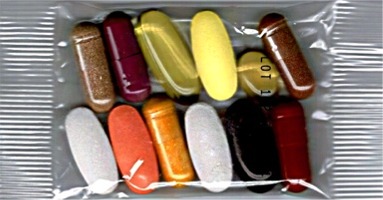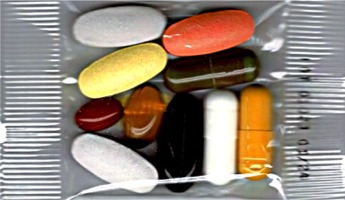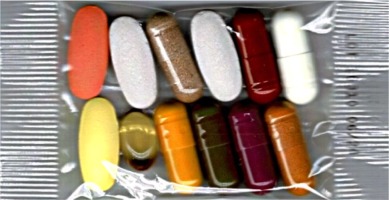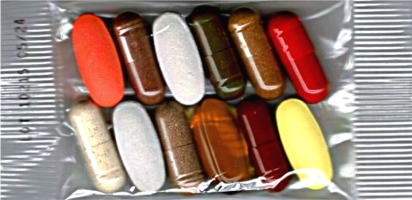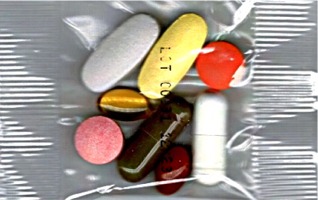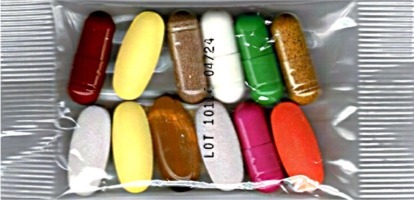As Elderly Population Grows, Good Nutrition and Exercise Become Key to
Better Health
There is no end in sight to our focus on the baby boom generation, even as
we approach the 21st century. Baby boomers will be a key factor in the coming
"agequake," when the elderly will comprise a much larger share of
the population. In 1980, about one in 10 persons were 65 or older. By 2030,
the 65 and older will number one in five. The first "boomers" will
reach age 65 in 2011. And more people will be living longer. According to most
projections, tomorrow's 85-plus will be a fast growing group as the median age
of death in the next century climbs to 84 years. That's 11 years beyond
today's median lifespan of 73 years. The needs of an aging population will
shape every facet of society in the next century, including nutrition.
"We don't have a good handle on nutrient performance for older
people," according to Ann W. Sorenson, Ph.D., health science
administrator at the National Institute on Aging (NIA). The recently-revised
Recommended Daily Allowances (RDAs) do not distinguish among older adults of
various ages-there is just one set of RDAs for all adults over age 50.
According to Sorenson, the Food and Academy of Sciences felt it did not have
enough information to go further. Nonetheless, most experts agree that the
dietary needs of people in their 50s or 60s are different from people in their
70s and 80s. Speaking at The American Dietetic Association (ADA) Annual
Meeting last October, Irwin B. Rosenberg, M.D., director of the USDA Human
Nutrition Research Center on Aging at Tufts University, reflected on the
coming demographic shift.
"The challenge we face is to maintain a higher degree of physiologic
performance throughout the life cycle," Rosenberg said, "so that the
individuals in our society are more independent, more mobile, more able to
take care of themselves. "If we are going to achieve this,"
Rosenberg said, "then it is going to be extremely important that we look
at those kinds of health patterns in which we can intervene. Clearly, diet and
nutrition are going to be very important aspects of this approach."
ANR Formula One,
Two, Three, Four,
Five, Six, Seven
Heart, Alert, Maximus,
CATALOG
Vitamin Requirements of Elderly
There are generally recognized changes in dietary needs for the elderly.
Many are related to loss of lean body mass and reduced level of activity. Less
muscle tissue and lower expenditure of energy result in a need for reduced
caloric intake. When eating less food, the elderly must be careful to select
nutritious foods so that their diminished intake will provide the nutrients
they need. In general, women require fewer calories, yet have nutrient
requirements similar to men, and must be especially mindful of their food
choices. Normal changes associated with aging result in higher requirements
for some nutrients such as vitamin D, which is necessary for proper calcium
absorption. The elderly typically get less exposure to the sun and have
reduced capacity for skin synthesis of vitamin D, a major source of this
nutrient.
Reduced intakes as well as lower absorption and metabolism of vitamin D and
calcium are among the many factors related to loss of bone mineral. This leads
to susceptibility to fractures and related problems, including morbidity and
mortality. The elderly also seem to require more vitamin B6, and may be more
sensitive to its depletion. Neurolgic and immunologic effects may become
apparent, although they are reversible with supplementation. As many as 30
percent of people at age 65 develop atrophic gastritis, the inability to
produce stomach acid, according to Rosenberg. This leads to impaired
absorption of certain important nutrients, including folic acid, calcium, iron
and vitamin B12. He estimated that by the age of 80, up to 40 percent of
persons develop atrophic gastritis, which has a significant impact on the
bioavailability of some key nutrients.
With vitamin A, however, the body's slowdown with age means that less of
the nutrient is better, not more. The elderly clear vitamin A from their blood
and tissue more slowly, meaning they can be more susceptible to vitamin A
toxicity. An over-supply of vitamin A could easily be harmful. Research into
vitamins E and C, both antioxidants, may lead to new RDAs for the elderly one
day. Vitamin E has shown a positive effect on the immune system in research at
the USDA Center. Whether vitamin E stimulates the immune system or prevents
its decline is unclear. An increased chance of developing cataracts has been
associated with low vitamin C intakes in research at the USDA Center. Vitamin
C's antioxidant properties may ward off potential damage by ultraviolet light,
but the conclusion cannot yet be drawn. Some data also indicate a correlation
between plasma vitamin C levels and the "good kind of cholesterol,"
HDL cholesterol.
Poor nutrition can have stark consequences for the elderly. Aging is
generally associated with decline of the immune response, which may be linked
with a cumulative, marginal deficiency of trace metals and vitamins, according
to Gabriel Fernandes, Ph.D., at the University of Texas. Of particular
interest are zinc, B vitamins, iron and other trace metals. Medications for
chronic disease can affect drug-nutrient interaction, as well. These and other
emerging ideas lead many to call for more definitive research into the
nutritional needs of the elderly.
ANR Formula One,
Two, Three, Four,
Five, Six, Seven
Heart, Alert, Maximus,
CATALOG
Who Is At Risk?
Elderly on low, fixed incomes are at greater risk of malnutrition. A lack
of skills and knowledge about food preparation is another problem. The
loneliness and despair felt by some elderly also contribute to loss of
appetite. Somewhat striking is the significance of living arrangement,
especially for men. Research has found a correlation between living alone and
a poor quality diet.
An NIA-sponsored study of elderly living in the community by Maradee Davis,
Ph.D., University of California at San Francisco, found that men living alone
were more often at risk of poor nutrition than men living with a spouse. The
researchers speculate that the reasons why solitary older people show poor
nutritional habits vary with gender. Men living alone are at particular risk
because they are traditionally unaccustomed to planning, shopping and
preparing for meals. On the other hand, women may feel unmotivated to prepare
meals when there is no one to share them with.
Some simple tips developed by the American Association of Retired Persons
(AARP) may help the elderly who live alone. AARP suggests inviting a friend
over to share a meal or having a standing date with a friend to eat out
together weekly. Other tips include buying smaller food packages to reduce
repetitious meals of leftovers, and setting the dining table attractively.
AARP also recommends joining a nutrition program at a community or senior
center, or signing up for Meals-On-Wheels for a few days a week, if eligible.
ANR Formula One,
Two, Three, Four,
Five, Six, Seven
Heart, Alert, Maximus,
CATALOG
Smell and Taste Important
For a variety of reasons, the senses of taste and smell decline with age.
The loss can result from disease, injury or drug treatments, as well as from
normal aging, according to Susan S. Schiffman, Ph.D., at Duke University.
Without the pleasure of eating, the overall quality of life for older people
is greatly reduced. This can increase depression and stress, and lead to poor
nutrition. In extreme cases, older people can become anorexic. A taste
disorder can also cause poor digestion by altering salivary flow and
intestinal motility. Schiffman has used odor and flavor enhancers to
compensate for chemosensory loss, increase appetite and reverse the effects of
anorexia. Odor and flavor enhancers may become an important factor in
developing special food products for the elderly.
ANR Formula One,
Two, Three, Four,
Five, Six, Seven
Heart, Alert, Maximus,
CATALOG
Thirst
Gradual, steady loss of body water is a factor in aging, and older people
more easily become dehydrated. This can be a major complicating factor in
illness and negatively affects outcome, according to Galen L. Barbour, M.D.,
with the Veterans Administration in Hampton, Virginia. The reasons may be
impaired renal concentrating ability, causing excessive water to pass, and
impaired sense of thirst. In some studies, thirst-impaired seniors do not seek
water, even when water is physically needed and available.
Habit also influences water intake, according to Barbour, as some elderly
avoid the greater likelihood of urinary incontinence by drinking less water.
He and others stress the importance of finding ways to overcome dehydration as
a "buffer" in case of illness and as possible protection from the
aging process. Finding a way to slow the aging process is a mythic quest,
which has not yet been abandoned entirely. (See story about dietary
restriction, p. 3.)
Short of that, nutrition science is concentrating as never before on the
special needs of older adults. The food industry is developing products and
services of greater value and appeal to older adults. Communities may develop
such concepts as targeted nutrition/exercise centers. Government is working to
develop better guidelines and programs for nutrition, perhaps even specialized
recommendations for the physically active and the sedentary. The ideas to help
us enjoy greater "healthspans" are countless, and their benefits
will surely grow with the aging population.
ANR Formula One,
Two, Three, Four,
Five, Six, Seven
Heart, Alert, Maximus,
CATALOG
Staying Young
Increased physical activity in the elderly has been shown to increase life
expectancy even into advanced old age. Many of the "so-called normative
changes" associated with aging are not inevitable, according to William
J. Evans, Ph.D., chief of the Human Physiology Laboratory at the USDA Human
Nutrition Research Center. "It's the changes in muscle mass that may be
triggering almost all of the other changes," Evans reported during the
ADA Annual Meeting. As evidence, he cited research in which active men,
subjected to bed rest for 21 days, had drops in aerobic capacity equivalent to
15 years of aging. Other similar studies reflect changes in almost every organ
system and the skeleton. "All of these changes with decreased activity
reflect almost precisely the kinds of very slow changes we see with advancing
age," he said.
Further, when athletes aged 45 to 60 were compared with athletes in their
20s, as well as inactive men in both age groups, researcher found that loss of
muscle and increase fat were not age-related. "We can see that the amount
of fat they have stored is directly related to the amount of time they spend
exercising," Evans said. "Age is not a co-variant at all." His
research indicated this probably holds true well past the age of 60. Related
research has shown aerobic exercise causes adaptations in skeletal muscle that
result in substantial increases in oxidative capacity, glycogen stores,
insulin sensitivity and functional capacity in the elderly.
ANR Formula One,
Two, Three, Four,
Five, Six, Seven
Heart, Alert, Maximus,
CATALOG
Pumping Up at 80-Plus
The most dramatic research by Evans has shown successful strength-training
with the very frail elderly in nursing homes. The average age in one pilot
study was 90.2 years old. Many required assistance in their daily tasks and 80
percent had a history of falling. For eight weeks of strength training, the
group lifted weights at 80 percent of their one-repetition maximum. By the
end, they increased muscle strength by 160 percent and muscle mass by over 10
percent. "It's important to note that in this population, muscle is quite
responsive and, in fact, it appears just as responsive to training as muscle
of younger people. And the real problem is low expectations," Evans
observed.
Reprinted from the International Food Information Council Foundation, 1990
Also see:
Phytochemicals: Nutrients Of
The Future
Antioxidants: An Antidote to
Aging?
Better Eating for Better Aging
Nutrition Is Key To Successful
Aging: Kidd
Latest Concepts in Nutrition
Life Long Weight Management
for Health & Happiness
10 Tips to Healthy Eating
New Perspectives on Diet and
Cancer
Upbeat on Fiber for Longer
Life & Better Health
A Refresher On Water for Long
Life & Health
Reference Guide for Vitamins
Reference Guide for Minerals
Reference Guide for Herbs
Reference Guide for Amino
Acids
Reference Guide for Special
Nutrients
Reference Guide for
Anti-Oxidants
Reference Guide for Nutritional
Greens
Reference Guide for Digestive
Nutrients
Reference Guide for Dietary
Fibers
Suggested Readings and Guide
References
ANR Formula One,
Two, Three, Four,
Five, Six, Seven
Heart, Alert, Maximus,
CATALOG
|
